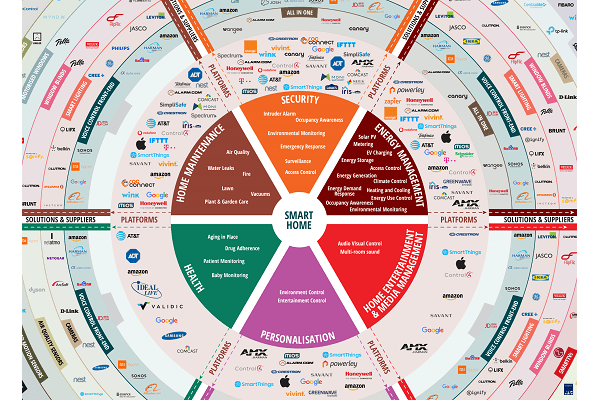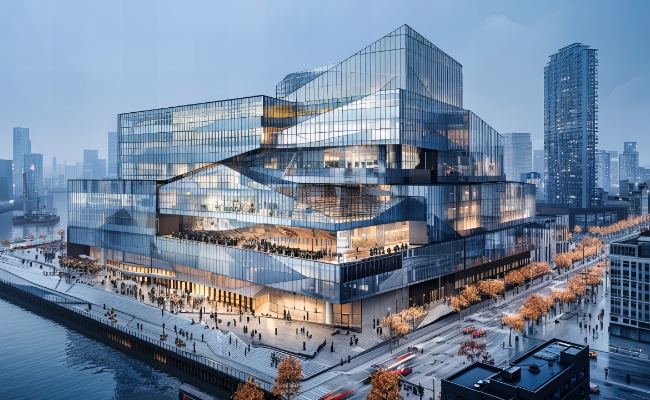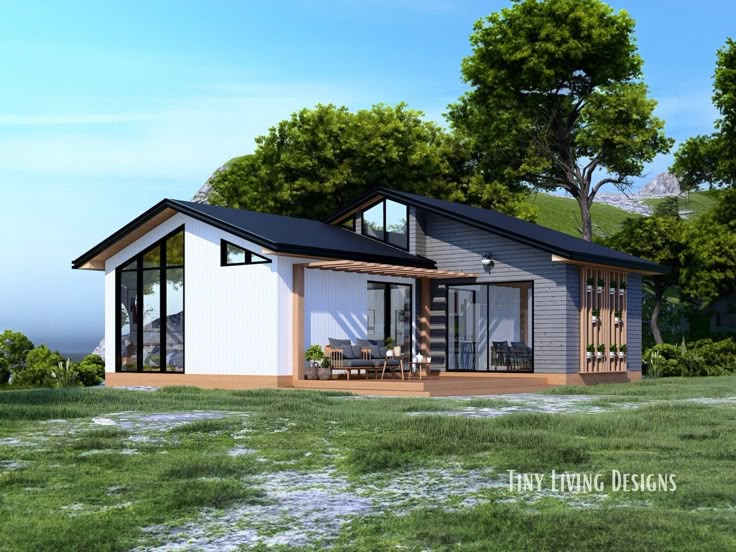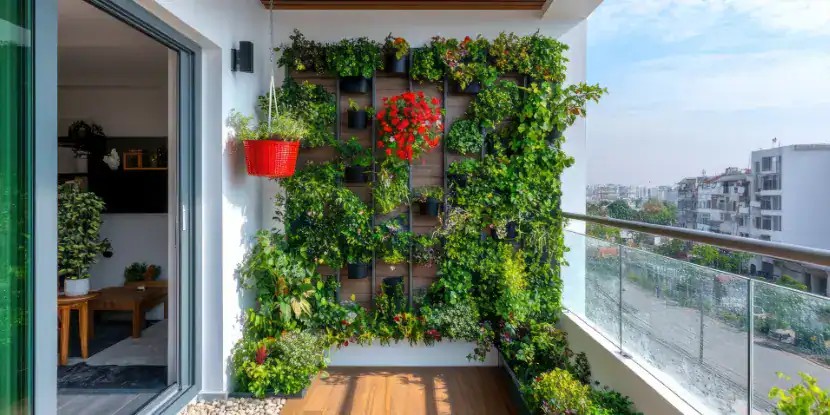
The Resilient Smart Home: How to Build an Ecosystem That Lasts
The modern smart home promises a future of unparalleled convenience, efficiency, and security. With a simple voice command or a tap on a screen, we can adjust our lights, set the perfect temperature, and monitor our homes from halfway around the world. This seamless integration into our daily lives, touching everything from Home Improvement to Health & Wellness, has driven a massive adoption of connected devices. However, beneath this glossy surface of effortless automation lies a fragile foundation: a deep and often invisible dependency on cloud services controlled by manufacturers. When these services are altered, monetized, or shut down entirely, the “smart” devices we invested in can be rendered useless overnight. This article explores the critical challenge of cloud dependency in the smart home ecosystem. We will delve into the risks, dissect the underlying technology, and provide a comprehensive guide to building a more resilient, secure, and future-proof connected home that truly serves your needs for years to come.
The Allure of the Connected Ecosystem: Convenience at a Cost
The rapid growth of the Smart Home market is fueled by the simplicity of the cloud-first model. For consumers, the experience is designed to be frictionless, transforming complex technology into an accessible lifestyle upgrade. This approach has profound impacts on everything from our Work-Life Balance to our pursuit of Sustainable Living.
The Cloud-First Model: How It Works
The vast majority of consumer smart home devices follow a straightforward architecture. A device, such as a smart light bulb or a security camera, connects to your home’s Wi-Fi network. When you issue a command through its app, that command doesn’t go directly to the device. Instead, it travels across the internet to the manufacturer’s servers—the “cloud.” The server processes the request and sends a command back to the device in your home. This model offers significant benefits: it enables remote access from anywhere in the world, facilitates easy firmware updates, and allows for complex AI-driven features, like a thermostat that learns your schedule to optimize energy usage. This can be a powerful tool for Financial Planning, leading to lower utility bills and a more Eco-Friendly Living footprint. For those in a Remote Work setup, the ability to manage home deliveries or adjust the environment without leaving your desk is a major boost to Productivity Tips.
The Hidden Dependencies and Long-Term Costs
While convenient, this cloud dependency creates a host of vulnerabilities. You don’t just own the hardware; you are perpetually reliant on the company that made it to maintain the software and servers that make it work. This introduces several risks. If the company goes out of business, is acquired by a competitor, or simply decides to discontinue a product line to focus on newer models, the servers that power your devices can be switched off. When this happens, your once-functional gadgets can become little more than e-waste, a direct contradiction to the principles of Minimalism and Zero Waste. Furthermore, this model can introduce “subscription creep.” A company might initially offer a service for free to attract users, only to later move essential features behind a recurring paywall. This turns a one-time purchase into an ongoing expense, a critical consideration for anyone focused on smart Budget Tips and long-term financial health.
When Connectivity Fails: Understanding the Risks of a Fragile Foundation

The dream of a fully automated home can quickly turn into a frustrating reality when its digital foundation crumbles. The reliance on external servers introduces points of failure that can impact not just convenience but also core aspects of home functionality, security, and personal privacy. Understanding these risks is the first step toward mitigating them.
The “Brick” in the Wall: The Reality of Discontinued Services
The most catastrophic failure in a cloud-dependent ecosystem is the “bricking” of a device. This term describes a scenario where a piece of hardware is rendered permanently inoperable because the external service it requires to function has been terminated. Imagine a set of smart switches you’ve integrated into your Interior Design, a smart pet feeder crucial to your Pet Care routine, or a security system you rely on for peace of mind. If the manufacturer shuts down the supporting cloud service, these devices cease to function. This isn’t a hypothetical problem; it has happened with numerous products from both startups and major tech companies. The result is a sunk financial cost, a disruption to your established routines, and a tangible source of anxiety, undermining the very Stress Management benefits the technology was meant to provide.
Beyond the Brick: Other Cloud-Related Vulnerabilities
Even if a company remains in business, cloud dependency introduces other significant risks. A simple internet outage at your home or a technical issue at the company’s data center can temporarily disable your devices. This might be a minor annoyance if your smart speaker can’t play music, but it becomes a serious problem if your Home Security cameras stop recording or your smart lock fails to operate. This is especially critical for applications in Senior Living, where reliable automation can be a lifeline for safety and independence. Furthermore, privacy is a major concern. Every command you issue and every piece of data your sensors collect is transmitted to and stored on a third-party server. This data, which can paint an intimate picture of your Family Life and daily habits, becomes a target for data breaches and can be used for marketing in ways you may not be comfortable with. Building a secure digital life is a cornerstone of Personal Development in the modern age.
Future-Proofing Your Connected Life: A Practical Guide to Resilience
The good news is that you are not powerless. By making intentional choices about the technology you bring into your home, you can build a smart, reliable, and private ecosystem that isn’t at the mercy of a single company’s business decisions. The key is to prioritize local control, embrace open standards, and adopt a strategic, hybrid approach.
Prioritizing Local Control over Cloud Dependency
The most powerful strategy for creating a resilient smart home is to choose devices that can operate locally, without needing to connect to the internet for their core functions. This is achieved through communication protocols like Zigbee and Z-Wave, which create a dedicated, low-power mesh network within your home. More recently, the new industry standard, Matter, is designed to further this goal of local interoperability. These devices communicate with a central hub or controller located inside your home—such as those from Hubitat, or open-source platforms like Home Assistant running on a small computer. This hub becomes the “brain” of your smart home. With this setup, a motion sensor in your hallway can trigger the lights to turn on instantly, even if your internet connection is down. This makes your home’s automation faster, more reliable, and infinitely more private. Setting up a local hub can be a rewarding DIY Project for those interested in Technology for Home.

The Power of Open Standards and Community
Vendor lock-in is a significant risk. When you buy into a single proprietary ecosystem, you’re betting on that one company’s longevity and goodwill. Open standards like Matter are designed to break down these walled gardens, allowing devices from different manufacturers to work together seamlessly. By choosing products that support these standards, you give yourself the flexibility to mix and match devices in the future. Furthermore, the open-source community provides an incredible safety net. Platforms like Home Assistant are supported by a global network of volunteer developers. This vibrant example of Community Living and Social Impact means that even if a manufacturer abandons a product, the community often finds a way to integrate it and keep it working through custom drivers and integrations, extending its life far beyond the official support window.
Your Smart Home Investment: Questions to Ask Before You Buy
Building a resilient smart home begins at the point of purchase. By approaching each new device as a long-term investment and performing due diligence, you can avoid common pitfalls and create an ecosystem that is both powerful and sustainable. This mindful approach to consumption aligns with principles of Minimalism and thoughtful Home Organization.
Pre-Purchase Due Diligence Checklist

Before adding a new device to your digital life, take a moment to research and ask these critical questions. This practice is as important to your home’s technological health as Meal Planning is to your physical health.
- Does it function without an internet connection? Look for terms like “local control,” “local processing,” or “works offline.” This is the single most important question for critical infrastructure like lighting, security, and climate control.
- What communication protocols does it use? Prioritize devices that use open or widely adopted local standards like Zigbee, Z-Wave, or Matter. Wi-Fi-only devices are often, but not always, cloud-dependent.
- Is there a mandatory subscription fee for core features? Understand the total cost of ownership. A cheap device with an expensive subscription is a poor long-term value, impacting your Personal Finance goals.
- What is the company’s track record and privacy policy? Choose established brands with a history of long-term product support and a clear, user-respecting privacy policy.
- Does it offer an open API or support for third-party integrations? Support for platforms like Home Assistant, IFTTT, or other open systems is a strong indicator of a flexible and future-proof product.
Balancing Convenience and Control
The goal is not to eliminate cloud-connected devices entirely. They offer unique benefits, particularly for remote access and voice control, which can be invaluable for everything from checking on your home during Travel News-worthy vacations to managing tasks while cooking Healthy Recipes. The key is to be strategic. Use robust, locally controlled devices for essential systems. Then, layer on cloud-based services for non-critical conveniences. This hybrid model gives you the best of both worlds: a reliable, private foundation with the flexible, powerful features of the cloud.
Conclusion: Architecting Your Own Smart Future
The smart home is more than just a collection of gadgets; it’s an integrated part of our environment that should enhance our lives, not introduce new points of failure and anxiety. The trend of cloud dependency has created a fragile ecosystem where our investments can be nullified by a corporate decision made miles away. However, by shifting our mindset from being passive consumers to active architects of our home technology, we can reclaim control. By prioritizing local processing, championing open standards, and asking the right questions before we buy, we can build a smart home that is resilient, private, and truly intelligent. This thoughtful approach ensures our homes remain a sanctuary of comfort and efficiency, supporting our well-being and adapting to our needs for many years to come.
Archives
- December 2025
- November 2025
- October 2025
- September 2025
- August 2025
- October 2023
- September 2023
- August 2023
- July 2023
- June 2023
- May 2023
- April 2023
- March 2023
- February 2023
- January 2023
- December 2022
- November 2022
- October 2022
- September 2022
- August 2022
- June 2022
- May 2022
- April 2022
- March 2022
- January 2022
- December 2021
- November 2021
- October 2021
- August 2021
- November 2020
- July 2020
- May 2020
- April 2020
- March 2020
- August 2018
- July 2018
- June 2018
- April 2018
- March 2018
Categories
- Age Groups
- AI/ML
- Alternative Medicine
- Animal Health
- Animal Husbandry
- Animals
- Anti-Aging
- Architectural Design
- Auditory Science
- Augmented Reality
- Automation
- Babies
- Baby
- Beauty & Skincare
- Biohacking
- Biomechanics
- Book Reviews
- Breastfeeding
- Budgeting
- Business
- Cardiovascular Health
- Career Advice
- Career Development
- Career Growth
- Cats
- Chess
- Chronobeauty
- Circular Economy
- Cleaning Tips
- Cloud Computing
- Cognitive Health
- Cognitive Performance
- Cognitive Science
- Community
- Community Building
- Community Engagement
- Community Living
- Computer Vision
- Consumer Guides
- Consumer Trends
- Container Gardening
- Content Analysis
- Content Non-Technical
- Content Strategy
- Cosmetic Chemistry
- Cultural Events
- Cycling
- Data Analysis
- Data Engineering
- Data Science
- Design Psychology
- Developer Productivity
- Diet
- Diet
- Digital Identity
- Digital Media
- Digital Wellbeing
- DIY Projects
- Dogs
- Engineering Culture
- Entertainment News
- Environmental Impact
- Environmental Science
- Equity Compensation
- Exercise
- Exercise Science
- Exercise Technique
- Exotic Pets
- Fall Gardening
- Family
- Family Health
- Family Life
- Fashion Business
- Fashion Industry
- Fashion News
- Fashion Tech
- Financial Analysis
- Financial Planning
- Flooring Maintenance
- Food
- Food Psychology
- Food Safety
- Food Tech
- Functional Fitness
- Functional Training
- Future Of Work
- Garden Care
- Garden Maintenance
- Gardening Tips
- Greece
- Greek
- Greek Food
- Gymnastics
- Hardware Engineering
- Health
- Health And Wellness
- Health Informatics
- Health Science
- Health Tech
- Healthcare Management
- Healthy Eating
- Healthy Recipes
- Holistic Health
- Holistic Wellness
- Home & Living
- Home Decor
- Home Financing
- Home Health
- Home Improvement
- Home Organization
- Horticulture
- Identity Management
- Industrial Design
- Industry Analysis
- Infant Nutrition
- Infrastructure Management
- Ingredient Deep Dive
- Integrative Medicine
- Interior Design
- Internet of Things
- Internet of Things (IoT)
- Invalid Request
- Investment Strategies
- Investment Strategy
- IoT
- Kids
- Leadership Development
- Learning Strategies
- Lifestyle
- Lifestyle Brands
- Lifestyle News
- Lifestyle Optimization
- Literary Criticism
- Literature
- Logistics Management
- Material Science
- Materials Science
- Meal Planning
- Media Analysis
- Meditation
- Mental Health
- Mental Performance
- Mental Wellness
- Miami
- Miami Food
- Mind And Body
- Minimalism
- Mobile Development
- Neuroscience
- No Applicable Categories
- Nutrition
- Nutrition News
- Operating Systems
- Operational Resilience
- Opinion
- Organization Tips
- Outdoor Living
- Over 40
- Over 50
- Over 60
- Parenting
- Parenting
- Parenting Strategies
- Performance
- Personal Development
- Personal Finance
- Personal Growth
- Personal Productivity
- Pet Care
- Pet Safety
- Philosophy
- Politics
- Productivity
- Protein
- Psychology
- Psychology of Space
- Reading Culture
- Real Estate Investment
- Recipes
- Regulatory Compliance
- Remote Work
- Renovation Planning
- Resource Management
- Responsible Pet Ownership
- Retail Strategy
- Robotics
- Science
- Seafood
- Seasonal Gardening
- Security
- Self-Care
- Skincare Science
- Skincare Trends
- Sleep
- Sleep Health
- Smoothies
- Social Impact
- Soft Skills
- Soil Health
- Spatial Computing
- Spatial Design
- Stress Management
- Supplements
- Sustainability
- Sustainability Science
- Sustainable Engineering
- Sustainable Fashion
- Systems Engineering
- Tax Optimization
- Tax Strategy
- Travel
- Travel News
- Travel Safety
- Travel Tips
- Trend Analysis
- Uncategorized
- Urban Planning
- Veggie
- Virtual Events
- Volunteering
- Wealth Management
- Wearable Technology
- Wellness
- Wellness Technology
- Work-Life Balance
- Workplace Culture
- World
- Writing
- Writing Skills
- Yoga News
- Zero Waste




Leave a Reply